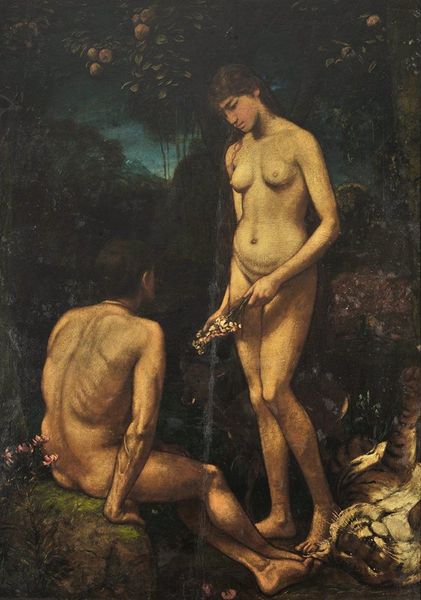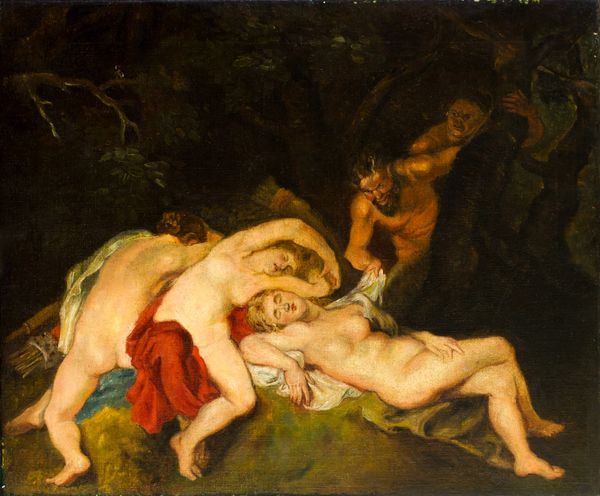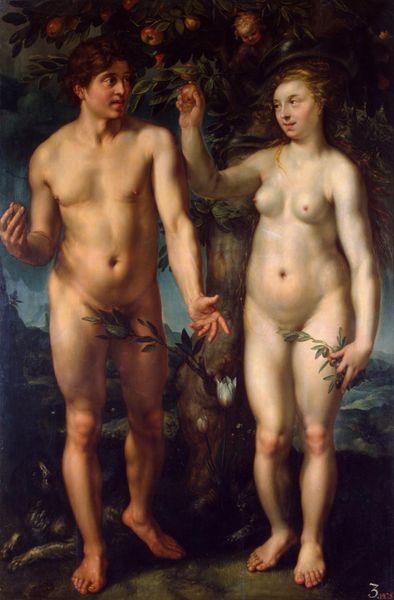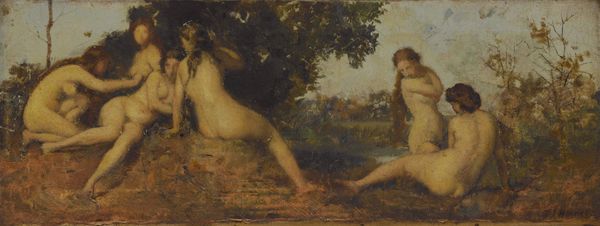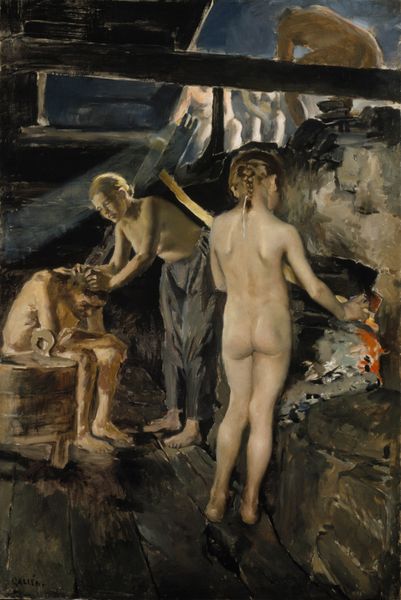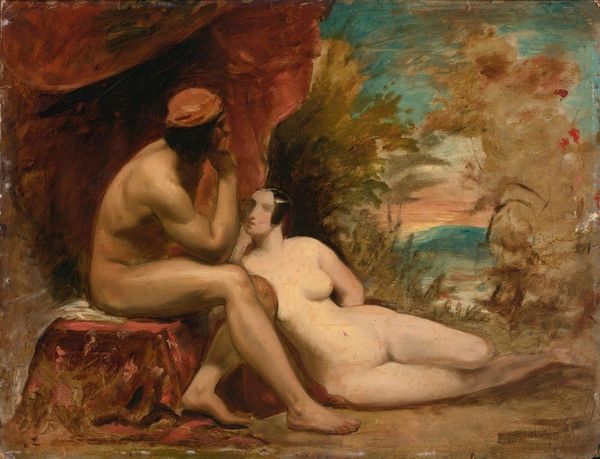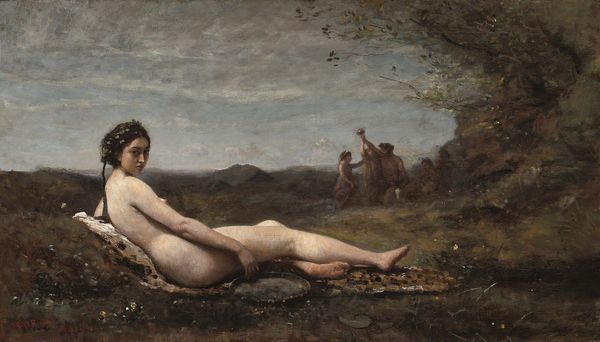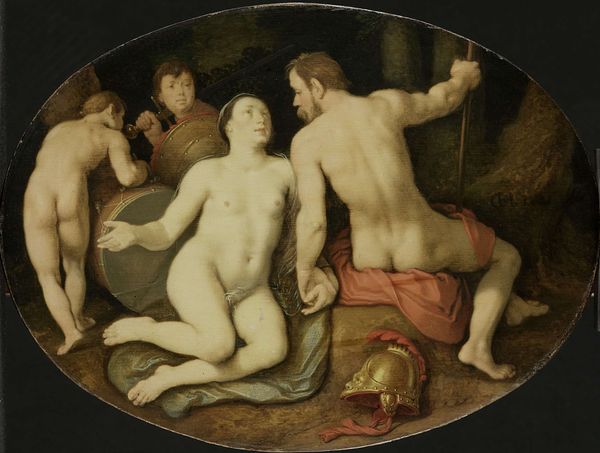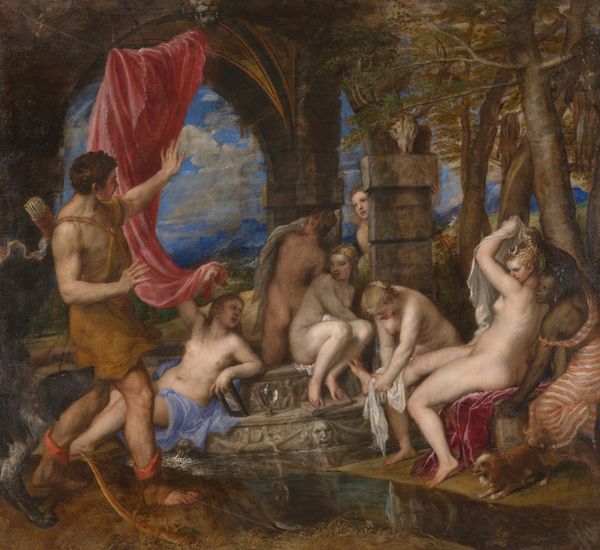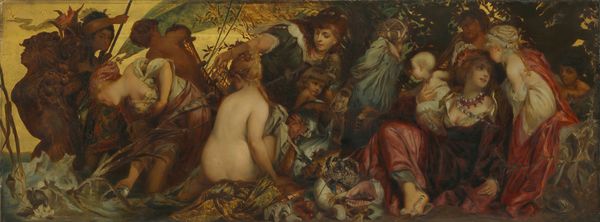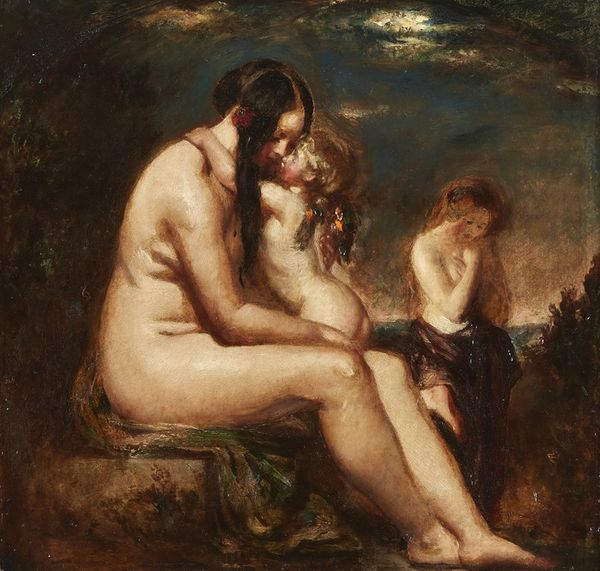
Copyright: Public Domain: Artvee
Hans Thoma painted Apollon and Marsyas in 1886, drawing on an ancient myth that resonated strongly with the social and cultural tensions of his time. In the painting, we see Apollo, god of music and order, with his lyre, facing Marsyas, a satyr known for his skill with the flute. Three Muses sit behind them in judgement. This scene represents a musical contest, the prelude to a grisly punishment for Marsyas, who dared to challenge a god. Thoma, working in Germany, invokes classical imagery to explore themes of artistic rivalry and the imposition of cultural standards. What's fascinating is how Thoma’s era saw a parallel struggle, with academic art representing Apollo’s refined order and the emerging modernists embodying Marsyas’s wilder, more innovative spirit. Understanding this painting means delving into the history of art academies, the rise of modernism, and the social values that shaped artistic taste. By consulting period reviews, artists' letters, and cultural histories, we can better appreciate how art reflects and shapes the society around it.
Comments
No comments
Be the first to comment and join the conversation on the ultimate creative platform.
